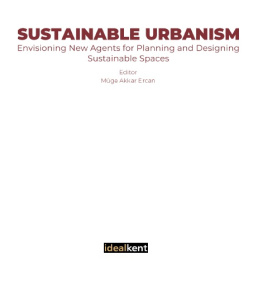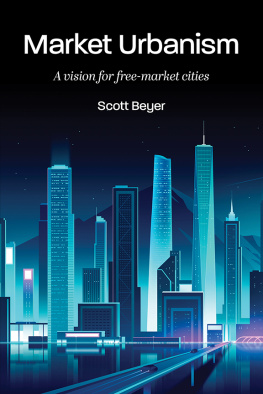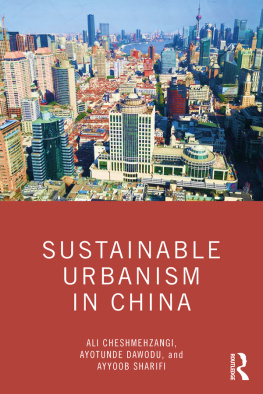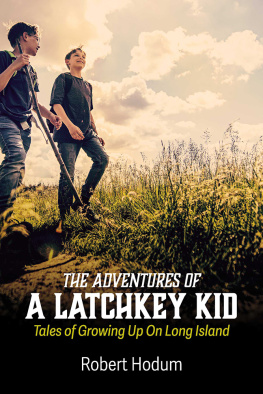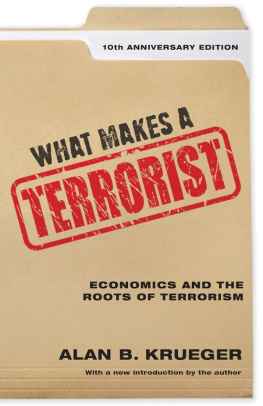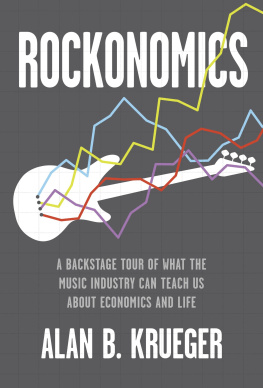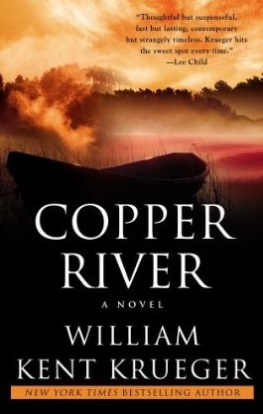Adventures in
Sustainable Urbanism
Adventures in
Sustainable Urbanism
Edited by
Robert Krueger, Tim Freytag,
and Samuel Mssner
Cover art: Jane McNeil-McKeag, Christchurch Redux , mixed media on plastic paper, 12 9, 2015. Collection of Robert Krueger, Tim Freytag, and Samuel Mssner.
Published by State University of New York Press, Albany
2019 State University of New York
All rights reserved
Printed in the United States of America
No part of this book may be used or reproduced in any manner whatsoever without written permission. No part of this book may be stored in a retrieval system or transmitted in any form or by any means including electronic, electrostatic, magnetic tape, mechanical, photocopying, recording, or otherwise without the prior permission in writing of the publisher.
For information, contact State University of New York Press, Albany, NY
www.sunypress.edu
Library of Congress Cataloging-in-Publication Data
Names: Krueger, Robert, 1968 editor.
Title: Adventures in sustainable urbanism / edited by Robert Krueger, Tim Freytag, and Samuel Mssner.
Description: Albany : State University of New York, [2019] | Includes bibliographical references and index.
Identifiers: LCCN 2018054676 | ISBN 9781438476490 (hardcover : alk. paper) | ISBN 9781438476506 (ebook)
Subjects: LCSH: Urban ecology (Sociology) | City planningEnvironmental aspects.
Classification: LCC HT241 .A38 2019 | DDC 307.1/216dc23
LC record available at https://lccn.loc.gov/2018054676
10 9 8 7 6 5 4 3 2 1
Contents
Robert Krueger, Tim Freytag, and Samuel Mssner
Robert Krueger, Tim Freytag and Samuel Mssner
Robert Krueger, Tim Freytag, and Samuel Mssner
Tim Baird and C. Michael Hall
Winifred Curran and Trina Hamilton
Freya Kristensen
Marit Rosol and Cristina Temenos
Constance Carr
David Giband
I-Chun Catherine Chang
Michal Kohout
Middle-Class Family Enclavism and Solidarity from a Distance
Notes from a Field of Contradictions in Dortmund, Germany
Susanne Frank
Robert Krueger, Tim Freytag, and Samuel Mssner
Illustrations
Figures
,
,
| From grapes to warehouses, remains of the worlds largest
winery, and plans for its future. Photos by Michal Kohout
(2014). |
,
| California Steel, formerly Kaiser Steel in Fontana. Photos
by Michal Kohout (2014). |
Tables
Preface
I nitially, our plan was to publish a book focusing on the social dimension of sustainable urban development. We wanted to present a series of models from the world over to show that many projectsalthough promoted as promising contributions to sustainable urban developmentcan be questioned and contested in terms of social equity and social justice. During the process of composing the book, we became increasingly aware that we should not limit ourselves to one way of looking at sustainable urban development, but to open ourselves to a broad range of perspectives. We thus decided to present the series of models in a field trip format in order to provide readers with firsthand experience of places as raw materials that must be actively assembled to produce meaning.
Adventures in Sustainable Urbanism is not just a book, but a starting point, an invitation, an open project to examine sustainable urban development in novel and exciting ways. Our aim is to involve students, scholars, and decision makers in many parts of the world. From this point on, you can be part of this exciting and interactive proposition. It is in your hands to explore the following pages as a living book and to activate connections with your real-life experiences. Thus, the book is what you will make of it; you are entitled not only to produce and to share, but also to critically reflect on knowledge of sustainable urban development.
As editors, we are happy and grateful to have received such good responses and excellent field trips from our contributors. Now were excited at the prospect of putting the book into practice. We plan to use the text in teaching classes at our universities and to share it with practitioners. We hope it will be seen as a valuable resource for teaching and thinking. It is our plan to establish an interactive website that allows our readers to share their own adventures in sustainable urbanism, with an aim of representing many countries and regions not included in this initial project due to space constraints. We are looking forward to learning from your experiences.
Rob Krueger
Tim Freytag
Samuel Mssner
Introduction
Global Transformations, Cities,
and the New Sustainability Consensus
R OBERT K RUEGER , T IM F REYTAG , AND S AMUEL M SSNER
T he end of the twentieth century marked a profound transformation of the Earths natural and social systems. For example, some geologists postulate that the Earth, for the first time in human existence, is in a geological epoch where the influence and transformative power of human beings has become the de facto dominant force in nature; indeed, the very layers of the Earth show the profound effects of human activities. This new era is often referred to as the Anthropocene. And its not evidenced only in the Earths crust, as The Economist (2011) has poignantly claimed something even more extraordinary: Humans have changed the way the world works. Following on, we, the editors, soberly call for a fundamental change in how we think about the Earth and its systems. To be sure, the search for new modes of managing global change and consequent transformations is the major global task of today.
Some have tried to extend the concept of the Anthropocene to cities. The Population Division of the United Nations Department of Economic and Social Affairs, for example, has reported in the World Urbanization Prospect that by 2050 two-thirds of the world population will live in urban areas (UNDES, 2014: 7). Consequently, the Intergovernmental Panel on Climate Change considers urban adaptation an opportunity for incremental and transformative adjustments to development trajectories toward resilience and sustainable development (IPCC, 2014: 538). At the same time, however, this observation is disrupting our traditional and somehow romanticized imaginary of cities, with some authors arguing that we all live in a moment of planetary urbanization (Brenner, 2014). These two big transformations can be merged into one termUrban Anthropoceneestablishing urban areas and processes of urbanization as the focal points for sustainable interventions.
Today, you would be hard pressed to find anyone opposed to sustainability. This is not to say that everyone agrees with what it means to be sustainable, but perhaps it does mean the concept should be addressed, no matter how we choose to define it. For example, in a recent radio report, the executive director of the Heartland Foundation, based in Alberta, Canada, claimed that constructing a pipeline for that provinces oil shale is more sustainable than trucking the fossil fuels to refineries in the United States. Sustainability is thus a concept that means everything and nothing, which is not to suggest the concept lacks social importance. Indeed, there are significant material implications when the concept is invoked in whatever form. There may be a new sustainability consensus, and this makes things more complicated.




